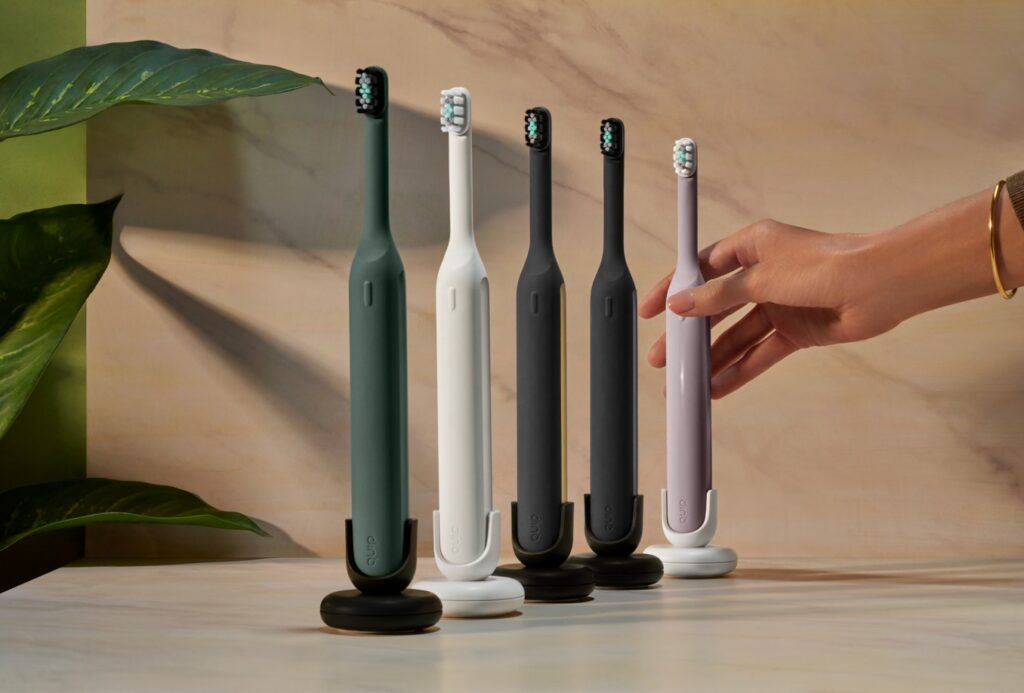At the height of the pandemic, brands were tasked with adapting business models to fit a new marketplace irreparably altered by lockdowns, social distancing, global economic hardship and elevated health risks. Many that were facing a steep decline in customers took to supporting communities through the crisis with cause marketing initiatives, from offering free products and services to donating funds to converting their facilities to PPE factories.
SmileDirectClub was a company that focused on the latter. Fast forward two years, and it’s learned a thing or two from the experience and invested in pandemic-proof channels popular with its 18- to 35-year-old core customer base—like TikTok. We caught up with SmileDirectClub CMO John Sheldon to discuss the brand’s success with the platform, how marketing has evolved over the pandemic, new data-driven strategies and social media’s advantage within a privacy-focused marketplace.
Chief Marketer: The last time we spoke, we talked about the ways SmileDirectClub was assisting the medical community during the pandemic, such as dedicating a portion of your 3D-printing facility to produce personal protective equipment. But things have evolved over two years, and of late you’ve had some success with TikTok. Can you talk about your strategy there?
John Sheldon, CMO of SmileDirectClub: It’s been a growing channel for us, particularly in a world where some of the other digital channels have become less effective, partly because of iOS 14.5 and above, and some of the privacy pieces. We’re looking for other places to expand our customer base. TikTok has a good chunk of people that are our customer, particularly in that 18- to 35-year-old range. So we’ve been working to spend more and more money there.
What we found is a couple of things. Number one is we’ve done some work with influencers who know how to make content that catches on the platform. By working with those folks in an authentic way, we’re able to expand our presence. All of the people that are representing us on these platforms are customers. They’re people who are actually using the product, whether it’s the whitening product or teeth straightening. Second, we’ve started to build our organic presence there. We have a team member named Emily who’s done a great job of watching some of the key trends that start to catch fire on the platform and, where appropriate, figure out how to insert our brand into the narrative.
And then third, adapting our existing advertising to the platform, and making sure that it mirrors what we’re doing there. We’ve been building a character named Dee Dee, who’s creating us as a challenger brand to Invisalign. Those videos bring people over to our website where we can convert them to being a lead and then ultimately a customer.
@happykelli #ad @SmileDirectClub has got me smiling big 😁 #smiledirectpartner ♬ original sound – Kelli
CM: With more options out there today than a few years ago, how do you stay ahead of competitors?
JS: Actually, I would say there’s not a lot more options out there than there were a few years ago. It’s pretty much turned into a two-horse race. Byte is pulling back, we can see that. Candid has basically gotten out of the direct-to-consumer business and only working through Candid Pro now. So it really leaves just us and Invisalign in the teeth straightening business in the U.S. that have any scale whatsoever, which is why we’ve really turned our attention to them.
After building the business for the last nearly eight years, we’re keen that we actually have a better option for most people. We want to make sure folks know that. [Invisalign] did a nice job over 25 years, [but we’re] creating a brand and want to tell people there’s another, and in many cases better, option.
CM: Is your main social media focus just on TikTok?
JS: No, we are on other platforms. We’re on Snapchat; we’re on Facebook. No doubt as other platforms arise, we’ll participate in those environments as well, but those are some of the main ones. We’ve done some work with Pinterest historically. We’re doing a little bit less with them right now, but that doesn’t mean we won’t go back to it in the future.
CM: Are there any lessons learned from your experience with TikTok that might be useful to other brands?
JS: Number one, you can’t just adopt your TV advertising or even some of the things that may work in other digital media platforms and hope that they work. You really need to be engineered for the TikTok environment, which is one that grabs attention quickly, entertains, creates something worth copying, and then allows people to iterate on your brand.
CM: You mentioned you have someone on staff who follows TikTok trends. Is it a similar process with the other social platforms that you use or is that unique to TikTok for you?
JS: We also follow trends on other platforms—although on TikTok, the pace of them turning over is a lot faster. We certainly work to jump on things quickly in that environment.
CM: The last time we spoke, the pandemic had significantly altered your marketing. Can you talk about how things have evolved over the past two years, and how the pandemic has affected your marketing from a business perspective?
JS: Probably the most important way the pandemic’s impacted our business is how consumers are looking to get started. When we originally founded the business, we started with this at-home impression kit, where you can do the impression, send them in and then your doctor will create your treatment plan. What we found was that for a $2,000 product that you’re going to stick in your body, people wanted to talk to somebody. We opened up a lot of SmileShops—almost 300 globally—for people to get started in. In the pandemic, people wanted to go to those less. In fact, for a while we were shut down and couldn’t operate those SmileShops. Our business went from 90 percent shops to 99 percent kits almost overnight.
Since then, we’ve been reopening the shops and it’s balanced back out. We’re about 50/50 as a business today. People are a lot more comfortable with telemedicine and teledentistry as a result of their experiences throughout the pandemic. That’s been really valuable. The other thing it taught us is that there’s a set of people who really want go talk to their dentist. So last year we opened up a SmileDirectClub partner network to enable your local dentist to help you get started with SmileDirectClub treatment. And now we’ve got over 700 locations signed on.
CM: What’s next for the brand? Any new products or innovations coming soon?
JS: We’re in the middle of a pretty exciting product launch right now. Not only are we a challenger brand in the aligner space, but we’re also a challenger brand in the whitening space. Two years ago, when we last talked, we had just launched an oral care line, including our whitening, in Walmart. The whitening took off. We have a huge amount of sales now going through the oral care aisle in Walmart and CVS and 12,500 other locations in North America.
We heard a lot of demand for a strips-like product, so we created one that is better in many ways than the market leader, Crest White Strips. Ours is a dissolvable strip that gets you two times brighter two times faster than Crest White Strips. Those power claims and that ability to take them on as a challenger brand is something we’re really excited about.
CM: Can you talk about some trends that you feel like marketers should be focused on right now for 2022?
JS: The number one piece, particularly as it relates to digital marketing, is about signals. In an environment where Apple and iOS have reduced the amount of signals, finding other ways—third-party ways—of sending signals into the platforms is really important. That’s one big piece. Beyond that, it’s the same things that we’ve been about in marketing forever. Making sure you have a real purposefulness to your brand, and that you communicate that throughout all of your advertising. It allows people to connect with and learn more about the brand.
More than anything through this pandemic, our CRM engine has been the engine of stability. It’s created an incredible ability for us to take leads, which have been a little bit bumpy as we’ve been experiencing the ups and downs of this pandemic, and pulling them through on a consistent basis to get us to aligner sales. Having a really strong underlying CRM capability is powerful and important, particularly for high-consideration products.
CM: Your business is highly data-driven. Are there new, interesting ways that you have been using your data lately?
JS: As it relates to that signals piece I was just talking about, one of the things that we’re doing now is actually scoring customers as they navigate our site and feeding that data back into the different algorithms so that the algorithms know exactly who we’re looking for and what behaviors we’re looking for. We’ve increased the number of behaviors that we’re feeding back into the algorithm to help get a lot smarter and help target a lot more of the right kinds of people for our business.
CM: We have a lot of readers who are on their way to the c-suite, so we’re always looking for advice from CMOs about what they should be focusing on in terms of career development and honing specific skills. What are the attributes and qualities of a marketer who is looking to become a CMO?
JS: To me, it really comes down to three pieces. Number one is you’ve got to listen to your customer, in every possible way. Some of the ways that I do that at SmileDirectClub is I watch, on a weekly basis, videos of visits to our SmileShop to see what that experience really looks like—obviously with the consumer’s permission. Another thing we do: I sit on two hours of phone calls, just listening to customer care calls. And then lastly, our social media listening team is feeding me reports and insights throughout. You need to be able to listen to your customer, take that and then go do something about what you learn.
The second is deep analytical skills. Marketing has become more analytical over the last 20 years, since the dawn of ecommerce. So, making sure that you’re sharp on your analytical skills, knowing what statistical significance means and making sure your team is doing proper test design—all of those elements are crucial. And then lastly, stay creative—amidst all of what I just said, which is much more about observing and analytics. The ability to break through is about doing something interesting and creative. Empowering your creative team to do breakthrough work, to do something distinctive and interesting that’s going to get people’s attention, still matters a lot in marketing. It’s all those things together that can make for a successful upgrade into the CMO seat.




 Network
Network

